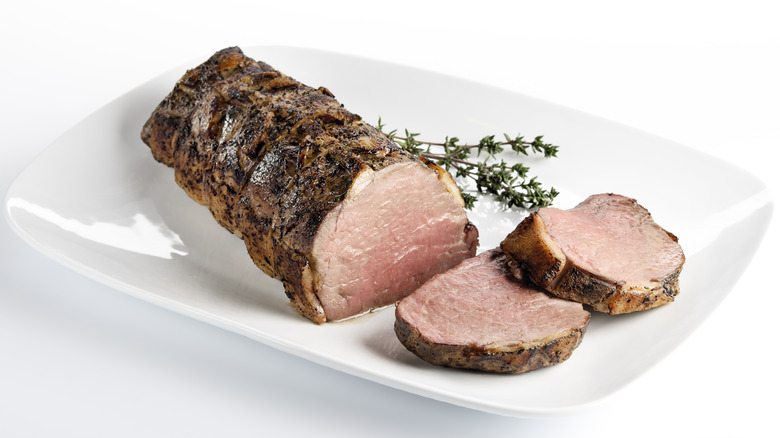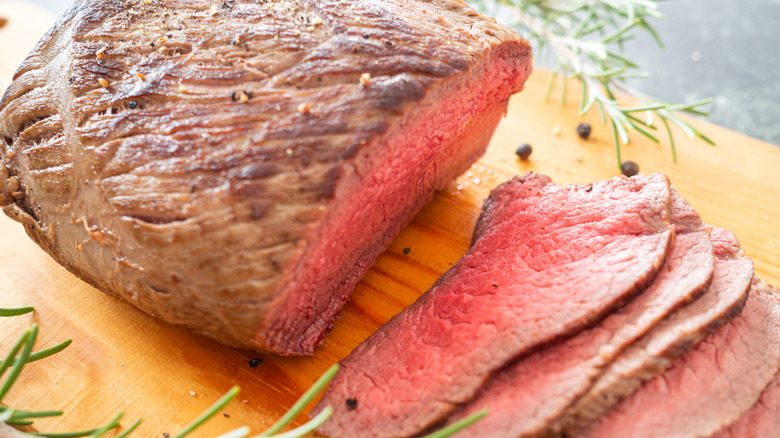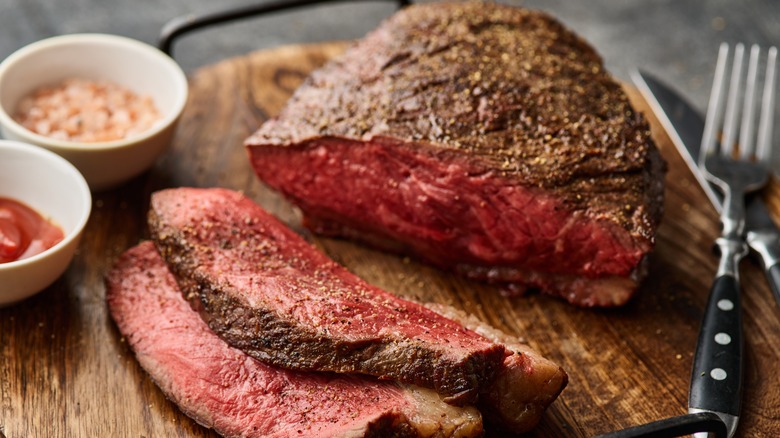What To Look For When Buying The Best Cut For Roast Beef
Roast beef has its origins in 15th-century England during King Henry VII's reign, and his bodyguards were called "Beefeaters" because they consumed it so often.
Since then, it has become the quintessential holiday dish. Some sources suggest, however, that recently roast beef has lost some popularity and less than 14% of restaurants now include it on their menus (per Tastewise). This could be due to the health food trend, our more "sophisticated" palates, or maybe just our busy lifestyles. Nevertheless, because it still remains the main choice for important family gatherings and Sunday dinners, choosing the best cut of meat is paramount to serving this tasty dish.
While butchers can offer advice on the best cuts, most times we simply go to the meat section of the grocery store and choose from a very large variety of options, and it becomes quite confusing. For most consumers, the money factor also comes into play, and the range in price of roasts can be huge. So, how do we choose the best cuts that make the most tender, mouth-watering roasts? One very important factor is fat.
Fattier cuts make better roast beef
The universal advice is to select a well-marbled cut of beef — one with small, white veins of fat in the meat — which will melt during the roasting process and naturally baste the meat while it cooks. Fat in roasts keeps the moisture intact and keeps the meat from drying out during the cooking process. Also, picking roasts that have fat on the outside (or asking the butcher to leave a layer on) will not only make it flavorful but will make a tasty crust on the outside when it is done. This layer can be removed before eating if you are worried about eating too much fat.
With this in mind, some of the cuts recommended by meat aficionados include tenderloin, prime rib roast, sirloin, and strip loin. These cuts tend to be more expensive, but a cheaper option is the eye of round roast, which is leaner but can be a delicious choice if roasted slowly in lower heat. In general, however, avoid cuts from the areas of the steer that get more exercise, like the bottom cuts, because they have less fat.
Quality is important, too
Along with the type of cut, pay close attention to the quality of the meat you are buying. When selecting your roast, look for ones that have a dark red color, which shows the aging of the meat. The bright pinkish-red hue shows that it is a high-quality piece of beef. If you can afford it, pick USDA Prime, the top tier of beef; but, if you need to be more economical, then Choice is acceptable. Perhaps as importantly, pick cuts that haven't been raised with antibiotics or hormones, which should be indicated on the packaging. A further test of quality is if you gently poke the roast in the package, it should bounce back at you.
Of course, there is a great deal of advice out there on the best methods to make your roast beef and ways that you can turn a cheaper cut of meat into a tasty and tender dish. But if you're looking for that perfect roast, heed these helpful hints when choosing your meat.


